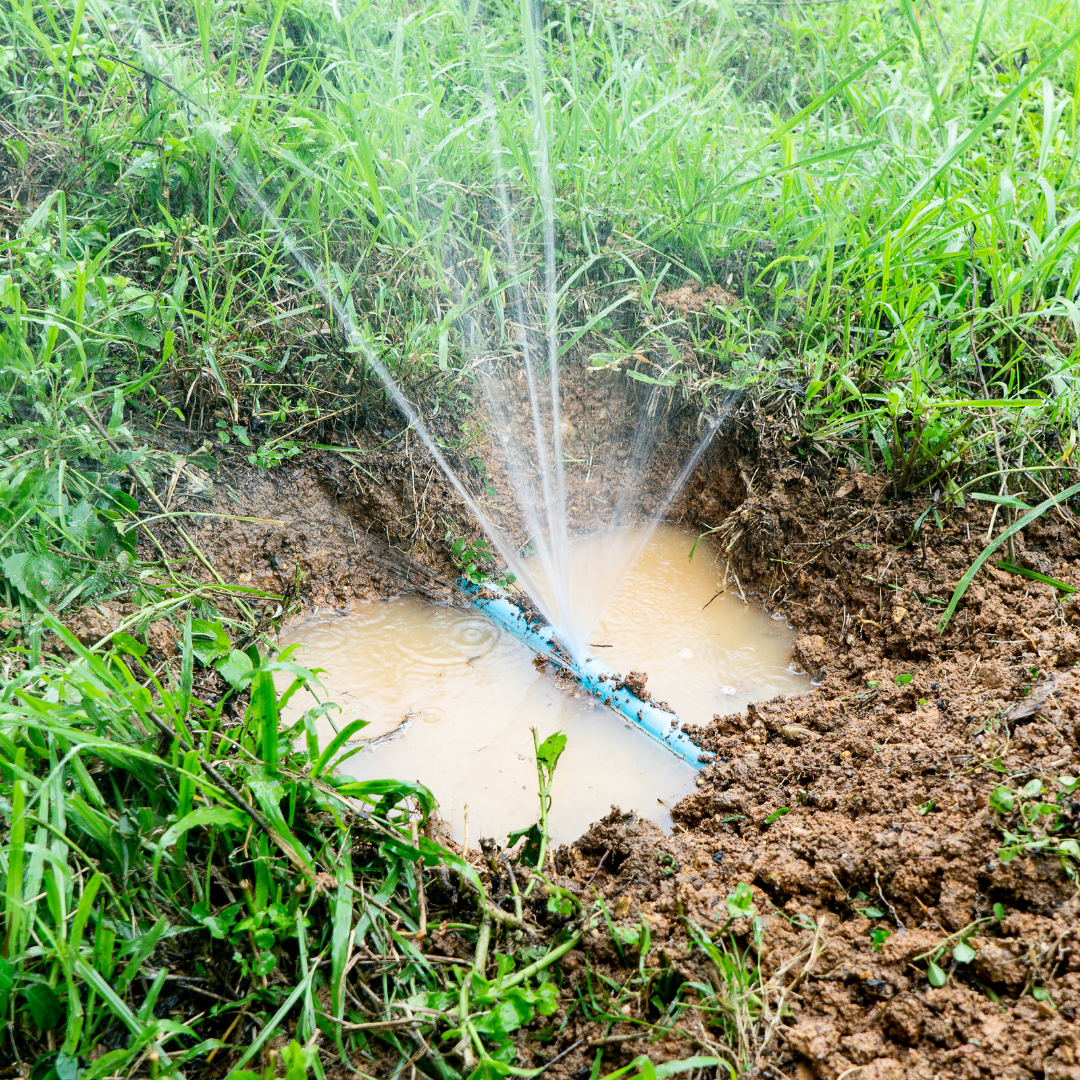How to Spot an Irrigation Leak Before It Costs You
If there’s a mini–Old Faithful erupting in your front yard and drawing a crowd, congratulations—you’ve got an easy leak to diagnose. But most irrigation leaks aren’t that obvious. They can leak underground and leak straight down without even making a puddle; meanwhile, it will waste thousands of gallons and add $1000s to your water bill.
Leaks can come from cracked pipes, broken sprinkler heads, or worn-out valves. The tricky part is finding them without tearing up half your yard. Here’s what to look for before you start digging.
1. Puddles or Wet Spots
If your lawn has puddles long after the sprinklers have shut off, there’s likely a leak below the surface. These wet patches often show up between sprinkler heads or in random spots across your yard.

2. Weak or Uneven Water Pressure
If your sprinklers used to throw a nice even arc and now they sputter or barely spray, pressure loss is a giveaway. A leak somewhere in the system is letting water escape before it ever reaches the heads.
3. Geysers or Water Spouts
This one’s obvious: a missing or broken sprinkler head shooting water straight into the air. It can waste over 10 gallons per minute, so shut it down as soon as you see it. An easy way to find these is to run your irrigation system and find where the geysers come up.
4. Water Spraying Between Sprinkler Heads
If you see water bubbling up between sprinklers, you probably have a cracked underground pipe.
5. Slimy Mold or Fungus Growth
If you see slick, slimy patches forming on your sidewalk or curb, that’s a slow leak working its way to the surface. Constant moisture gives fungus a perfect place to grow.
6. Water Stains or Mud on the Curb
Water that seeps through soil and carries mud or sediment to your sidewalk often points to a broken pipe or leaking sprinkler head. Besides wasting water, it erodes your lawn from the inside out.

7. Puddles Around Sprinkler Heads
Pooling water around a sprinkler usually means the valve feeding that zone isn’t closing fully. In this case, water will keep running to the zone even when the system should be off.
8. Extra-Green or Fast-Growing Patches of Grass
If one patch of your yard looks like it’s on steroids while the rest looks normal, that spot’s getting bonus water from a hidden leak. It’s basically a slow, underground irrigation line just for that area.
9. A Wet or Flooded Water Meter Box
Pop open your water meter lid. If there’s standing water or it’s constantly damp, that’s a red flag. The main line to your irrigation system could be leaking before it even reaches the sprinklers.

10. Water Flowing Over the Curb
If water is constantly running into the street, it could be poor drainage—but more often, it’s a broken sprinkler head or underground line that’s dumping excess water.
11. Dirty or Clogged Sprinklers
If your sprinklers are spitting muddy water or the spray pattern looks weird, debris might be entering the system through a crack or rupture in the pipe. That debris can do even more damage if it’s not fixed.
12. A Spinning Water Meter When Everything’s Off
Turn off all the water in your house and check your meter. If it’s still spinning, that means water is going somewhere—and if it’s not inside your home, it’s probably your irrigation system leaking.
How to Catch Leaks Automatically
If you want to avoid playing detective every month, there’s tech for that. NOWi’s Building Monitor continuously tracks your water usage in real time. It can catch irrigation leaks—big or small—the moment they start and send you an alert before they waste thousands of gallons.

You don’t have to wait for a huge water bill to tell you something’s wrong. Real-time monitoring can alert you right when leaks start.

